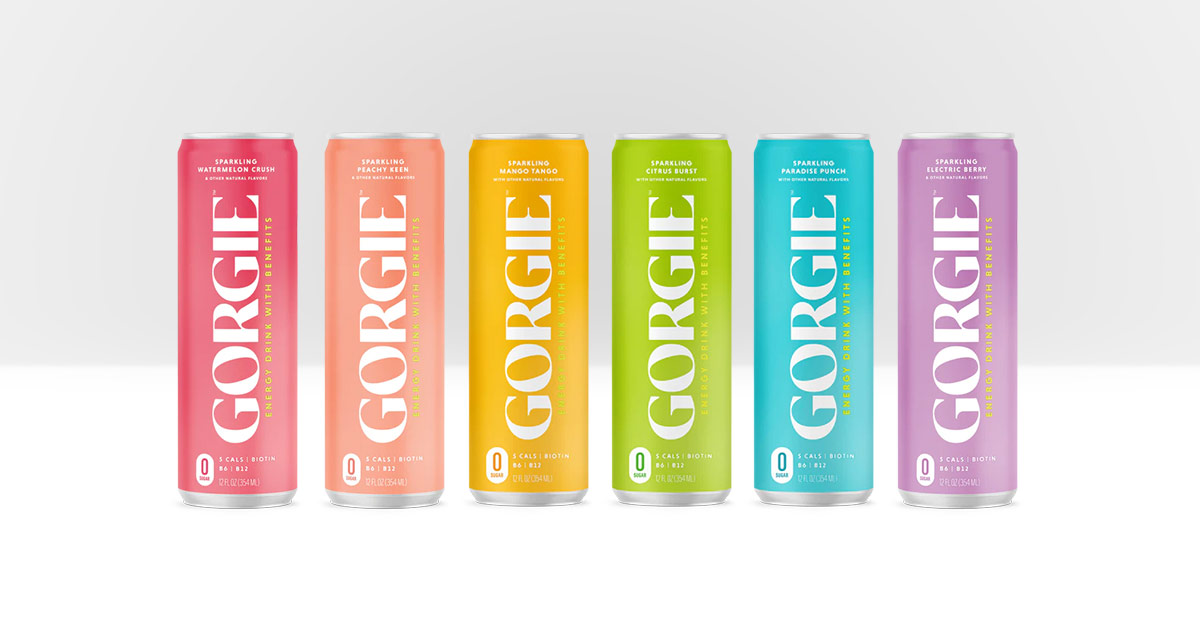After assessing its first year on shelves, Gorgie has realigned its distribution strategy to seek out the “stickiest” sales channels, a road that’s taken the female-focused energy drink back towards digital to continue driving on-shelf growth.
When the brand launched last January, it had a specific growth playbook in mind: turn on its DTC Shopify site, get into Whole Foods and then grow via a DSD network that reached far and wide, explained founder and CEO Michelle Cordeiro Grant. The startup quickly recognized that while physical retail is essential to growing the brand, staying on shelf is costly.
“We’re realizing we grew really quick [in physical retail] – like we went into all doors with Sprouts, H-E-B, [and more] retailers,” said Cordeiro Grant. “We owe it to them to do a really incredible job while we continue to grow.”
Gorgie is still “very bullish and intentional” on brick and mortar, but Cordeiro Grant believes the brand needs to focus more attention online. The company currently has active DSD agreements with Big Geyser in New York and is working on setting up another system in Texas in addition to selling through both UNFI and KeHE.
“That’s probably good for now,” she said, while noting that behind California, Gorgie’s second best selling state is a three-way tie between Texas, Florida and New York. “[Digital convenience] sets you up to do DSD even better because now you created this footprint, and this repeat with customers that have ordered on Amazon. When you embark on DSD, they’re going to recognize the can.”
For the community and influencer marketing-focused brand, a “digital convenience” strategy sees its partners drive sales toward physical retail and, for consumers located in regions where the products aren’t yet available, to online platforms like Amazon, Instacart and Faire. “You get this beautiful marriage [between both]… You can’t just be digital and you can’t just be physical – you need to do both really well.”
Gorgie also recently began its first Costco rotation in the Northeast, Midwest and Texas regions. That partnership, spearheaded by Gorgie’s strategic partner and investor Jason Cohen, formerly of Halen Brands, has already seen the club stores’ diehard following generate organic engagement in-store, Cordeiro Grant detailed, including posts from wives and girlfriends of high-profile athletes (WAGs).
So what caused this strategy shift? In June, the team noticed its Amazon business was bringing in about “five figures a month” with little to no effort and attention. The brand began testing a new strategy and directed all of its Shopify site traffic through Amazon.
“[I thought] this is interesting. We should probably spend more time on this,” said Cordeiro Grant, noting it was seeing “double digit” conversion rates. “We started telling our influencers to push towards Amazon… and when we looked at the map, we were shipping to every state in America – Alaska, Hawaii, all of it.”
Cordeiro Grant recognized that the platform was driving sales well beyond the boundaries of the brand’s physical store footprint. That “robust” coverage made it “a legit business” in her mind and has since grown to six-figure-a-month with sales in the channel up 90% in January alone, she explained. Customers continue to come back too and the brand is seeing 40% repeat order rates on its variety packs and about 60% repeat on select single-SKU packs.
Those changes have brought a shift to its team make up. Last year, Gorgie onboarded two new sales experts – Aaron Sorelle from C4 and Briana Costanza from Essentia. As the brand has scaled back its physical plans, both Sorelle and Costanza have moved on to other opportunities in CPG. Keeley Mennie has joined the company from PepsiCo to serve as director of shopper marketing, Cordeiro Grant explained.
Beyond Amazon, Gorgie is also activating its influencer partners to double as field marketers for beauty and wellness spaces including hair and nail salons, esthetician offices and yoga studios and more. Cordeiro Grant explained that it has directed influencer partners to bring a case of Gorgie with them to facial and nail appointments and introduce those businesses to Faire or Amazon.
This network has been a key contributor to building Gorgie in “exploratory spaces,” as Cordeiro Grant refers to them, and has brought the product to venues where its target audience is already shopping. The last piece to the new digital convenience strategy sees Gorgie tapping Instacart even deeper to support its physical store footprint.
While the brand-level data garnered from Instacart has posed challenges to determine where and why consumers are purchasing the drinks, Cordeiro Grant explained it plans to ramp up its focus and presence on the platform since growth has been promising so far and the sales directly support its retail partners.
For example, Hawaiian hotel The Wailea was carrying the beverages in its mini fridges without Gorgie’s knowledge. It later found out they had ordered “a hundred cases” from Erewhon via Instacart to stock the drinks. Beyond hospitality, Gorgie is also supporting discovery by testing placements in corporate offices, hospitals, spas and fitness studios.
“We were fortunate enough that we’re still in a very strong [position] with cash, [and have been] conservative on inventory, but enough to stretch,” she said. “We’re always thinking about ourselves like a public company [so we] have the room to shift, jive and be agile. This first year is like three years because you’ve learned so much about where you’re seeing stickiness and why. For us, it’s really important that we always keep cash top of mind while we’re testing.”
